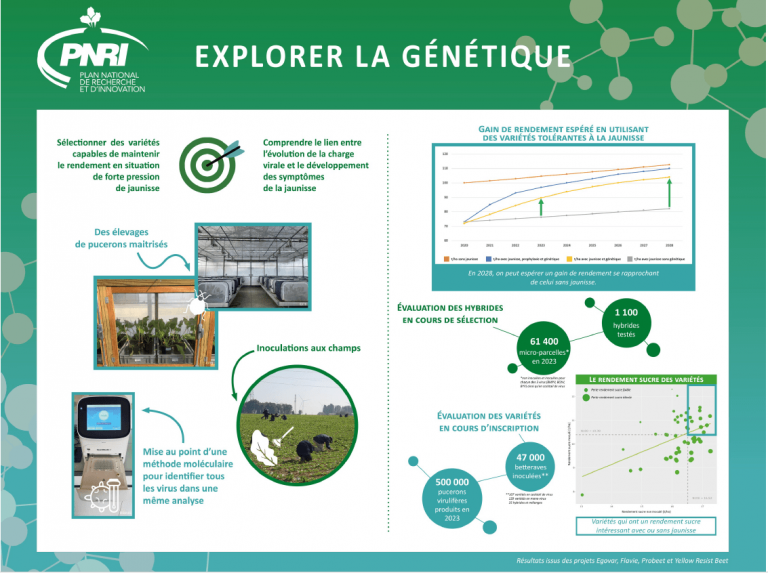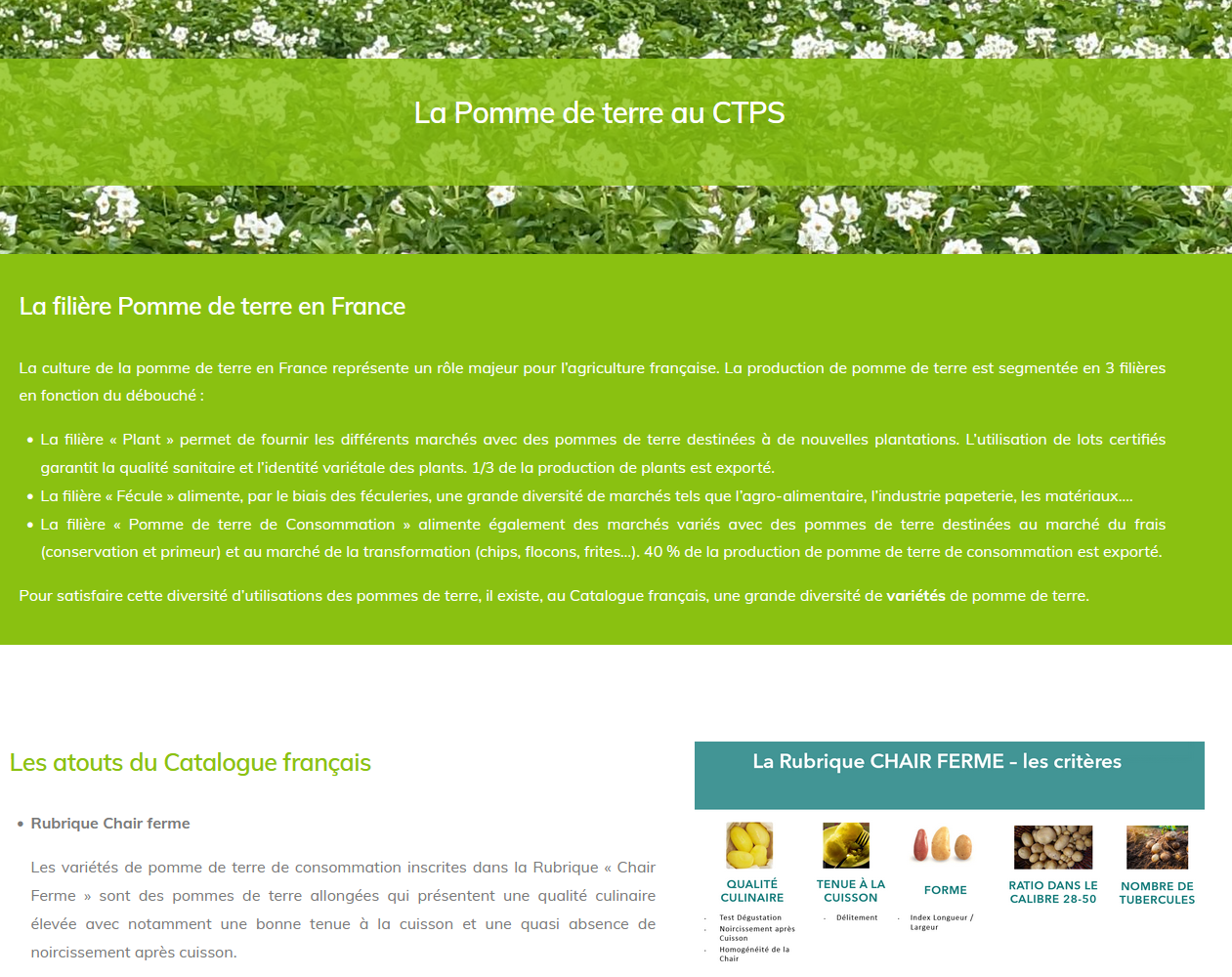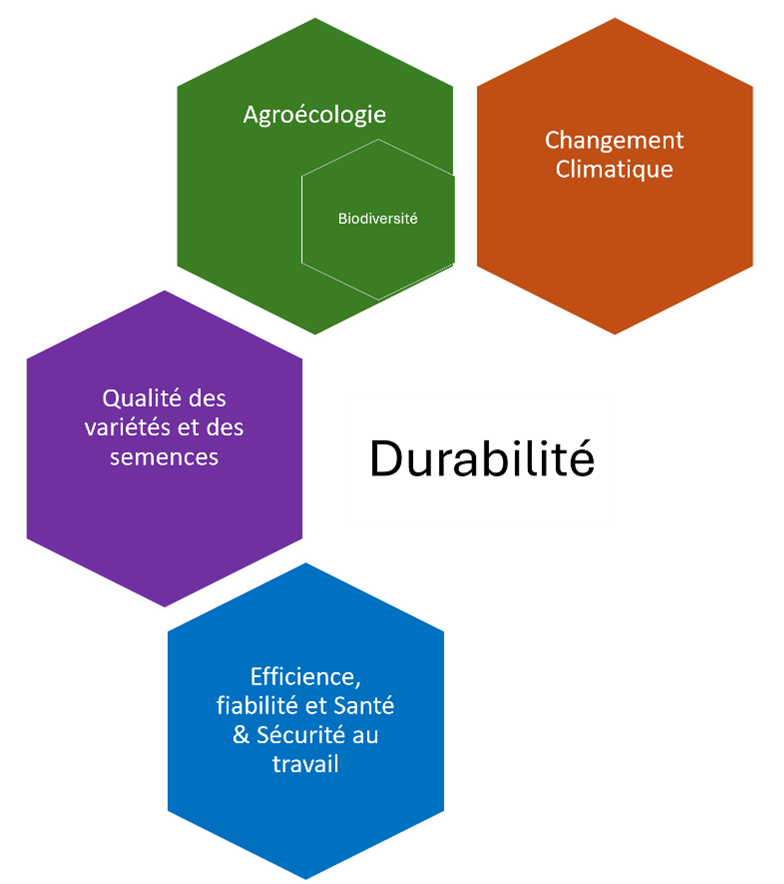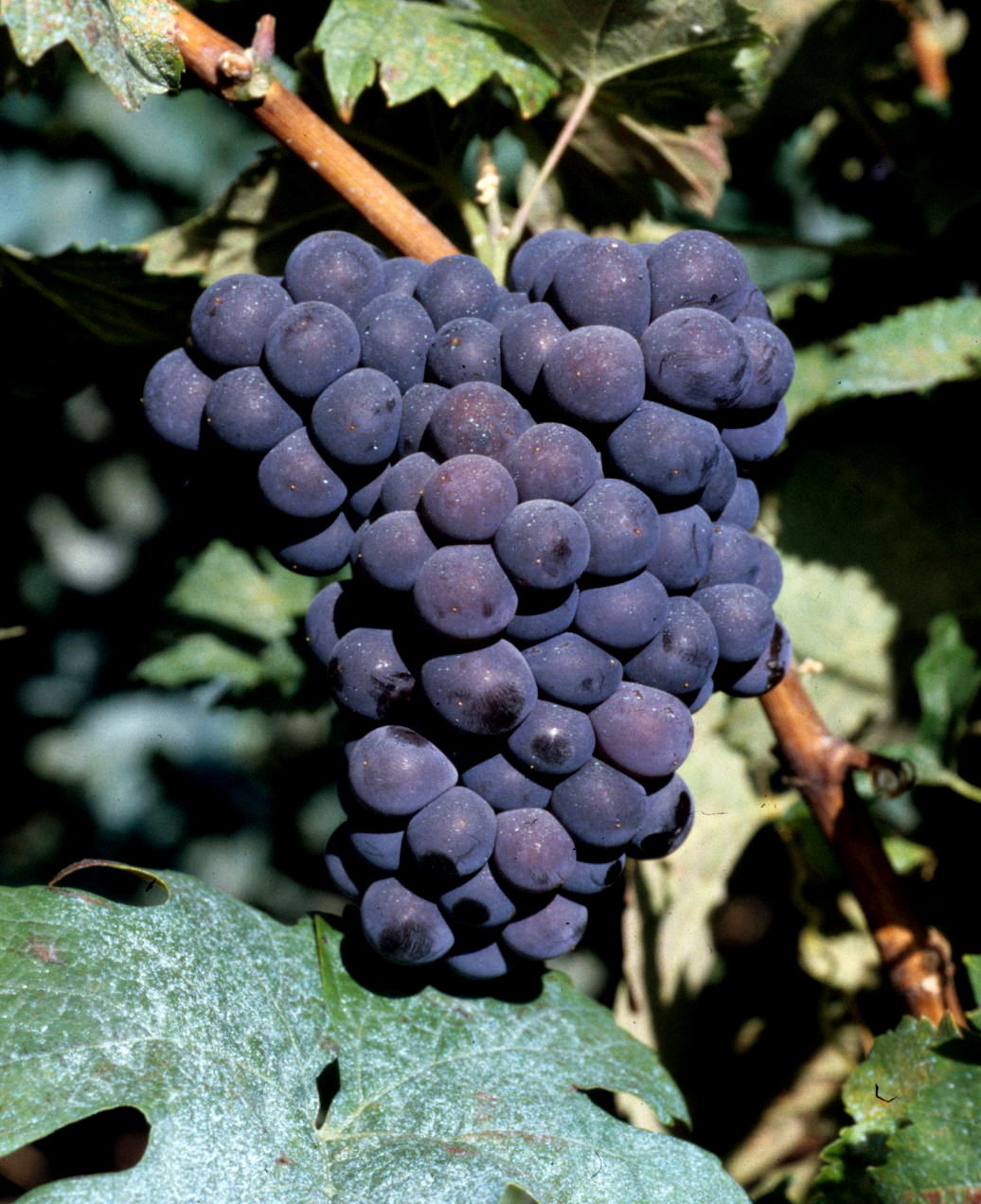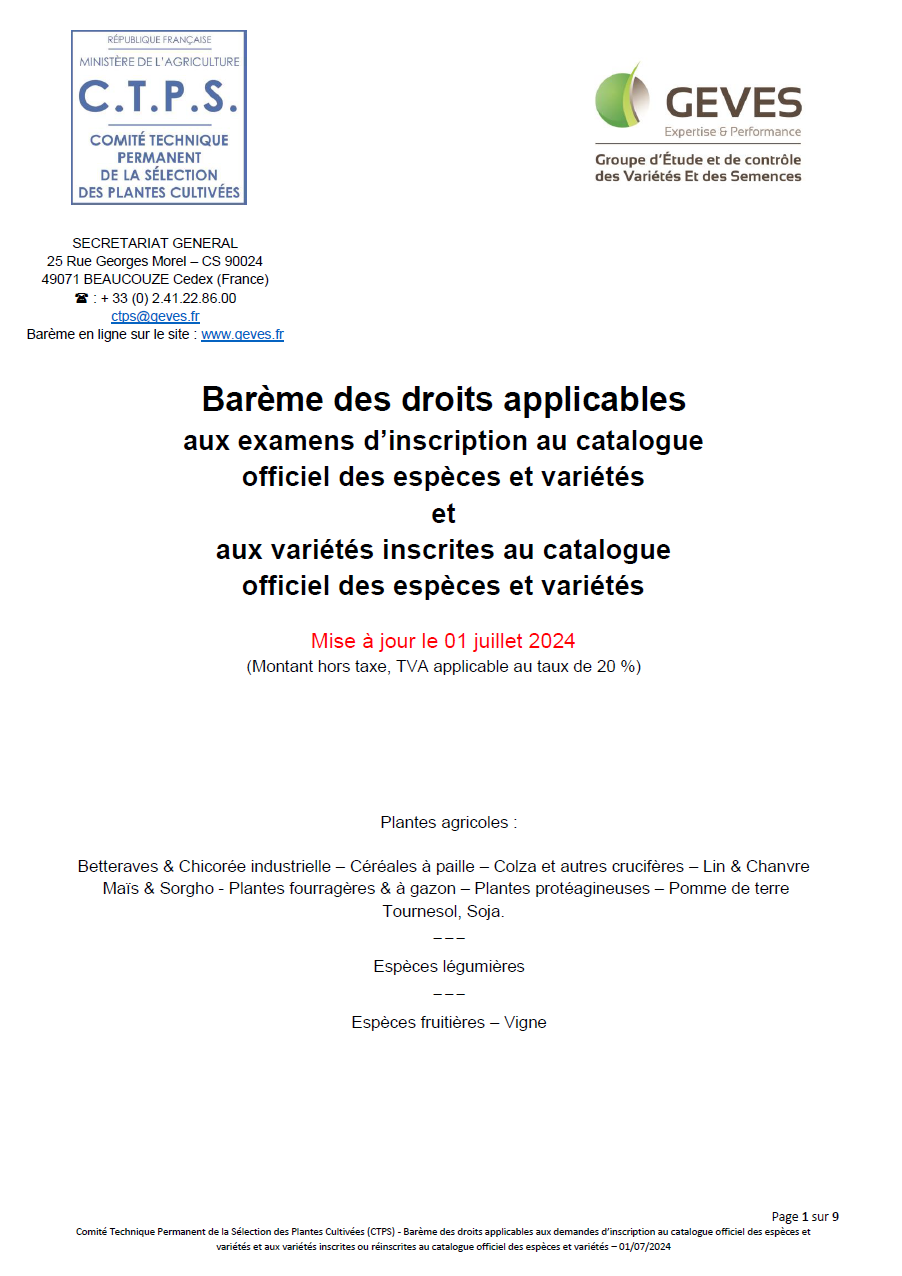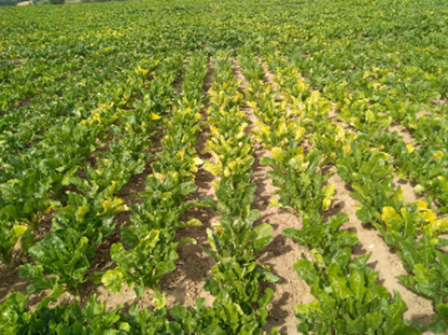
Introduction of a new CTPS protocol to evaluate varietal resistance/tolerance to viral sugar beet yellows, in collaboration with the PNRI Yellows Resisbeet project
Until 2018, the use of neonicotinoids was the main means of fighting beet viral yellows by limiting the spread of aphid vectors. In order to find alternative solutions to their elimination, the PNRI (National Research and Innovation Plan) is funding several projects.
Among them, Yellows Resisbeet project (2021-2024), led by GEVES in collaboration with the ITB (Beet Technical Institute), has developed protocols for evaluating varietal resistance/tolerance to the main yellows viruses in Europe (BYV, BChV, BMYV), as part of the registration of varieties in the French Catalogue and post-registration.
At the International Congress of Plant Pathology, GEVES presented two posters on virus detection methods and the evaluation of tolerance/resistance to viral yellows. At the European Betteravenir trade fair in October 2023, GEVES took part in the “Exploring genetics” stand, highlighting the importance of evaluation criteria based on acceptable sugar yields in both yellows-inoculated and protected non-inoculated conditions.
At the ICPP congress (International Congress of Plant Pathology) from 20 to 25 August 2023 in Lyon, GEVES presented two posters on the Yellows Resistbeet project:
- The first poster, entitled “Development of tests of resistance/tolerance to virus yellows in sugar beet”, presented progress on the criteria for evaluating tolerance to yellows in the field and in tunnels, with the presentation of BYV and BChV viruses on the yield of varieties.
- The second poster entitled “A new diagnostic tool for the identification of four beet yellows viruses by multiplex RT-qPCR” explains the development and validation of a new method for identifying the 4 viruses responsible for beet yellows in Europe in a single molecular analysis. It is essential to have an effective detection test to control the presence of the desired viruses and the absence of undesirable viruses in inoculated field trials under semi-controlled conditions intended to evaluate the varietal behaviour of beet against each of the viruses.
At Europe’s largest open-field beet exhibition, Betteravenir, on 25-26 October 2023 in Berny-en-Santerre, GEVES and all the other partners in the PNRI presented, in the PNRI stand, the first alternative solutions to neonicotinoids that have emerged as a result of these 3 years of research. The Yellows Resistbeet project was represented on the “Exploring Genetics” stand. The sustainability of this genetic solution will have to be combined with all the other functional levers, such as companion plants, identification of viral reservoirs and the use of flower strips and auxiliaries. At the end of his visit, the French Minister for Agriculture announced the continuation of the PNRI for a further three years.
More specifically, here are the different aspects of the research carried out over these 3 years and presented at the ICPP and the Betteravenir trade fair:
Development of the inoculation method for the 3 viruses BYV, BChV and BMYV
Before developing a resistance/tolerance test, GEVES, in collaboration with UFS and ITB, had to improve their method of producing and multiplying viruliferous aphids for each of the 3 viruses in 2021 to serve as a source of inoculum: BYV (Beet Yellows Virus), a closterovirus responsible for severe yellows, BChV (Beet Chlorosis Virus) and BMYV (Beet Mild Yellowing Virus), two poleroviruses responsible for moderate yellows. Inoculation is carried out by depositing leaf fragments, each carrying at least 5 viruliferous apterous aphids, in the heart of healthy beet plants at the 4-6 leaf stage.
A field trial was carried out in 2021 to define the best inoculation methods for ensuring uniform infestation of plots and significant yield discrimination between protected inoculated and non-inoculated methods. The inoculation method involving 10% of plants infected with BYV or BChV resulted in the best infestation of plots, based on DAS-ELISA tests, and proved sufficient to cause significant sugar yield losses.
Development and validation of the 4-virus multiplex RT-qPCR method
As the DAS-ELISA method is unable to distinguish between the two poleroviruses BChV and BMYV, GEVES, in collaboration with INRAe Colmar, has developed a new method for detecting and identifying the four yellows viruses using multiplex RT-qPCR. As well as distinguishing between the two poleroviruses, this new method is 100 to 10,000 times more sensitive than the DAS-ELISA method, and only requires a single reaction to detect the four viruses, since it is based on the use of 4 TaqMan probes, each specific to a virus and marked by a different fluorophore.
This method is used to confirm the presence of viruses inoculated in the field and in tunnels, and to detect any secondary contamination. In addition, this tool provides semi-quantitative data that can be used to characterise the resistance or tolerance to yellows of the varieties evaluated. It is also possible that this method could be used as part of epidemiological monitoring to track changes in beet yellows over the years.
Development of a test for evaluating tolerance / resistance in the field and in tunnels to the 3 viruses BYV, BChV and BMYV
Varietal evaluation in the field:
Based on previous results, a protocol for evaluating varietal tolerance/resistance to viral yellows has been developed in 2022 and refined in 2023 in the field for the registration of varieties in the French Catalogue and for post-registration evaluation. The CTPS’s primary objective is to be able to identify varieties with good sugar yield performance under both inoculated and protected non-inoculated conditions.
The field study on 2 sites per year of study in 2022 revealed a variability in varietal response to yellows viruses, but no varieties that could be described as tolerant. Visual ratings represent additional information. In 2023, all the varieties under study at the CTPS have been evaluated in the field on a larger number of sites and replicates to be able to reliably measure sugar yields in yellows-free variety trials and the associated yield losses. From now on, 4 sites in year 1 and 4 sites in year 2 will be mobilised, each comprising 4 non-inoculated replicates protected against aphids and 2 replicates inoculated with a mono-infection virus: BYV, BChV and BMYV.
Also in 2022 and 2023, samples were obtained on two dates, the first at an early stage in July (12-14 leaf stage) and the second at a late stage just before harvest in September, to monitor the presence of the inoculated virus and detect any secondary contaminants. As well as confirming the presence of the inoculated virus on each occasion, this study showed that between the 1st and 2nd dates, there was often an increase in the rate of contamination per site, with a generally similar viral composition. To reduce the costs involved, the question arises of controlling viruses present only on a single date, preferably at the early stage, since natural contamination has less impact on yield beyond the 12-leaf stage.
Variety evaluation in tunnels:
A protocol similar to the one used in the field has been developed in insect-proof tunnels (ITB and GEVES) to verify varietal behaviour to viral yellows. In the case of excessive viral pressure or mixed infection in the field, the tunnels could be used for additional studies. In 2022, 73 varieties were evaluated in 4 inoculated tunnels (single BYV, BChV, BMYV infection and BYV+BChV co-infection) and one non-inoculated, protected tunnel. Visual ratings in 2022 and 2023 showed that there were significantly fewer symptoms in the tolerant controls than in the susceptible controls for all virus inoculation conditions. Co-inoculation with BYV+BChV was found to cause more symptoms than inoculation with BYV and BChV alone.
RGB images were acquired using the Phenoman boom in the GEVES tunnels in 2022 and 2023, enabling the development of an initial algorithm for predicting the rate of yellow surface on Image J.
As sugar yield is the main criterion for estimating tolerance, statistical studies are underway in 2023 to define the optimum number of plants/plot and replicates for reliable measurement of sugar yield in tunnels.
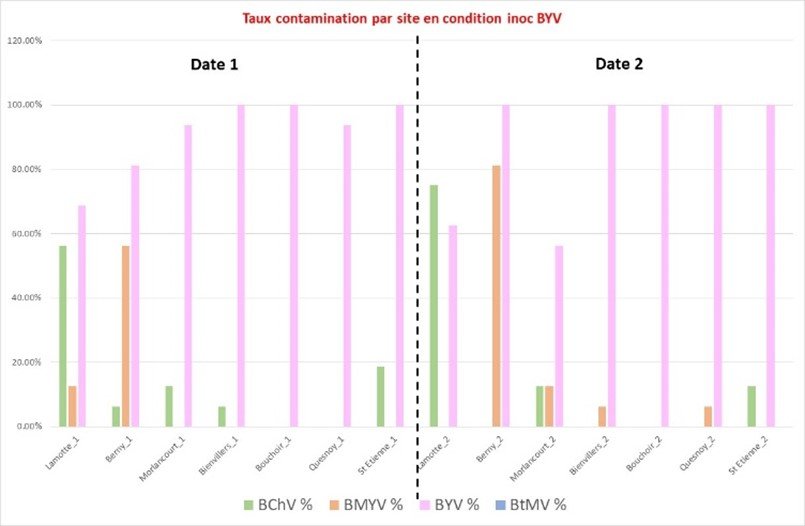
Development of a protocol for evaluating tolerance / resistance to BtMV
Beet Mosaic Virus (BtMV), the potyvirus responsible for beet mosaic, is less common and harmful in Europe than the other three viruses. Nevertheless, an initial methodology was set up at GEVES in 2022 to define a greenhouse protocol for varieties under study at CTPS, using mechanical inoculation at the 4-5 leaf stage. The first symptoms are then observed around 7 days later, but visual observations begin between 10 and 12 days after inoculation and are continued regularly until around 30 days. The results obtained seem to indicate that all 74 varieties under study in 2022 are susceptible to BtMV based on visual symptoms.
For the varieties under study in 2023, ratings are currently being carried out using BtMV-tolerant controls. This protocol is not currently considered as a criterion for variety registration in the French Catalogue.
Development of statistical models to better estimate the productivity of varieties
Spatial statistical models have been developed incorporating a covariate based on the intensity of yellows ratings. The aim of this approach is to use spatial modelling to correct yields under heavy yellows pressure, particularly where there is an outbreak of yellows. Overall, the spatial models seemed better at estimating yield than the alpha-plane models.
In conclusion, the development of these varietal tolerance/resistance evaluating protocols will provide a genetic solution to the ban on neonicotinoids. The genetic lever could be offered to experimental pilot farms to develop an integrated control method against viral yellows in an agro-ecological context, by integrating them with the other functional levers.



